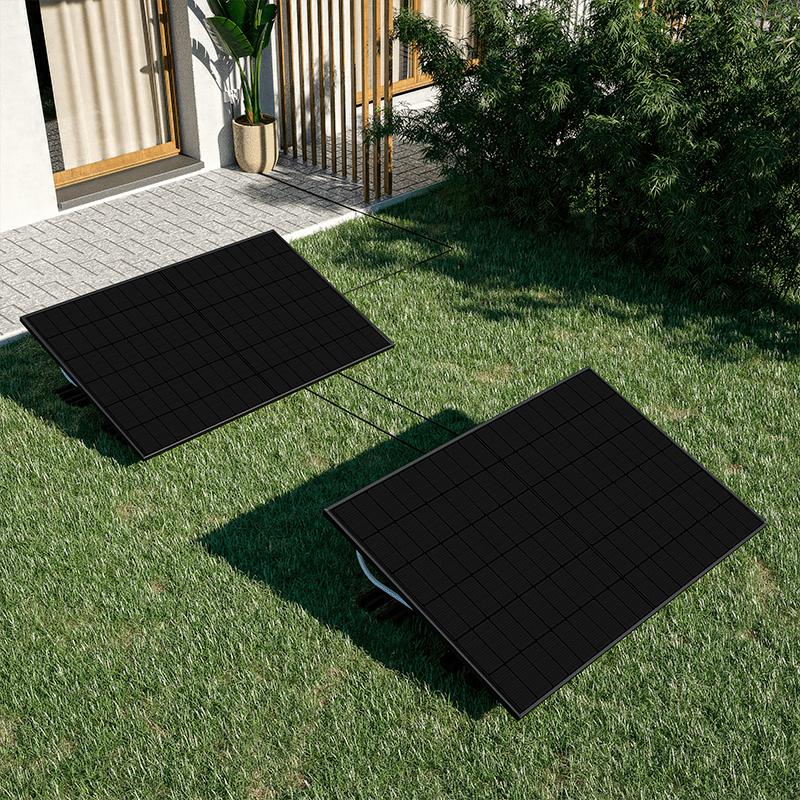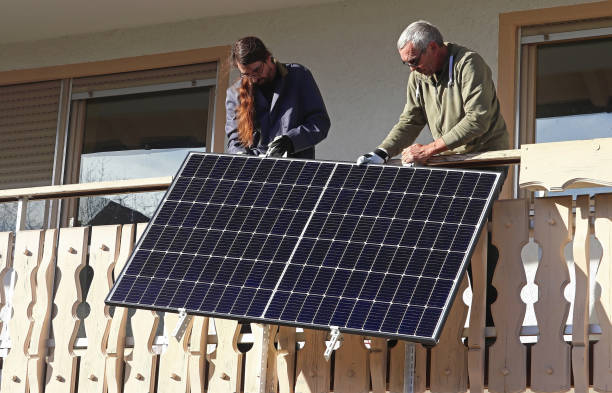
Entdecken Sie die Klimaauswirkungen von Balkonkraftwerken
In an era marked by escalating concerns about climate warming and the urgent need for sustainable solutions, the role of renewable energy sources has become paramount. Among these sources, solar energy stands out as a beacon of hope, offering a clean and abundant alternative to traditional fossil fuels. Plug & Play Solar Kits, in particular, have emerged as a transformative technology in the quest to mitigate climate change. In this article, we delve into the climate impact of solar kits, shedding light on their contributions and implications for a greener future.
The Green Virtues of Solar Energy
Solar kits, also known as Plug & Play Solar Kits, enable the conversion of sunlight into electricity through the photovoltaic effect. This innovative technology has several inherent advantages, the foremost being its zero greenhouse gas emissions during operation. Unlike conventional power plants that rely on fossil fuels, solar kits generate electricity without burning any fuel or emitting harmful pollutants. This quality positions solar energy as a crucial component in reducing carbon emissions and combating the adverse effects of climate change. If you would like to know how much is the impact of your electric company's electricity, we recommend you to see the bottom of your electric bill, where the energy impact is displayed. You will be surprised.
Climate Mitigation Potential
The climate mitigation potential of solar panels is far-reaching and significant. By harnessing the power of the sun, these kits help to offset the need for electricity production from fossil fuel-dependent sources such as coal and natural gas. As a result, the carbon footprint associated with electricity generation is significantly reduced. Sometimes up to 50% of the power bill is reduced thanks to the production of these kits. This depends a lot on where you are located (you can check how much your savings would be based on your location with our yield calculator). By using solar batteries, you can continue to harness solar energy after the sun has gone down, further increasing the savings on your electricity bill and your CO2 emissions.
According to the International Energy Agency (IEA), solar PV capacity is expected to grow by over 600 gigawatts (GW) between 2021 and 2026, further amplifying its climate mitigation impact.
Lifespan and Emissions
To evaluate the climate impact of solar panels, it is essential to consider their entire lifecycle. While the manufacturing process involves some emissions, recent advancements have significantly reduced the carbon intensity of solar panel production. Furthermore, the warranty of solar panels typically ranges from 20 to 25 years, and a lifespan even longer, during which they produce clean energy without any direct emissions.
When accounting for emissions associated with manufacturing, installation, operation, and end-of-life disposal, solar panels still demonstrate a net reduction in greenhouse gas emissions compared to conventional electricity generation methods. A study published in the journal Nature Communications found that solar kits offset their carbon emissions within 1 to 4 years, depending on the technology used and the location of installation.
Energy Payback Time
One crucial metric used to assess the climate impact of solar panels is the Energy Payback Time (EPBT). EPBT represents the time it takes for a solar kit to produce the same amount of energy that was consumed during its manufacturing process. Thanks to advancements in solar technology and increased production scale, EPBT has steadily decreased over the years.
According to the National Renewable Energy Laboratory (NREL), the average EPBT for solar panels installed in the United States has dropped from around 10 years in 2000 to less than 3 years in 2021. As EPBT continues to decrease, the climate benefits of solar panels become more pronounced, making them a crucial tool in our fight against climate change.
Conclusion
Solar kits offer a transformative solution to the pressing climate challenges we face today. Their ability to generate electricity without greenhouse gas emissions positions them as a key driver in mitigating climate change. As solar technology continues to advance and economies of scale improve, the climate impact of solar panels becomes increasingly significant. By harnessing the power of the sun, we have the potential to transition to a sustainable and low-carbon energy future, fostering a world that is not just powered by renewable energy but also protects and sustains our precious planet.


















Hinterlasse einen Kommentar
Diese Website ist durch hCaptcha geschützt und es gelten die allgemeinen Geschäftsbedingungen und Datenschutzbestimmungen von hCaptcha.